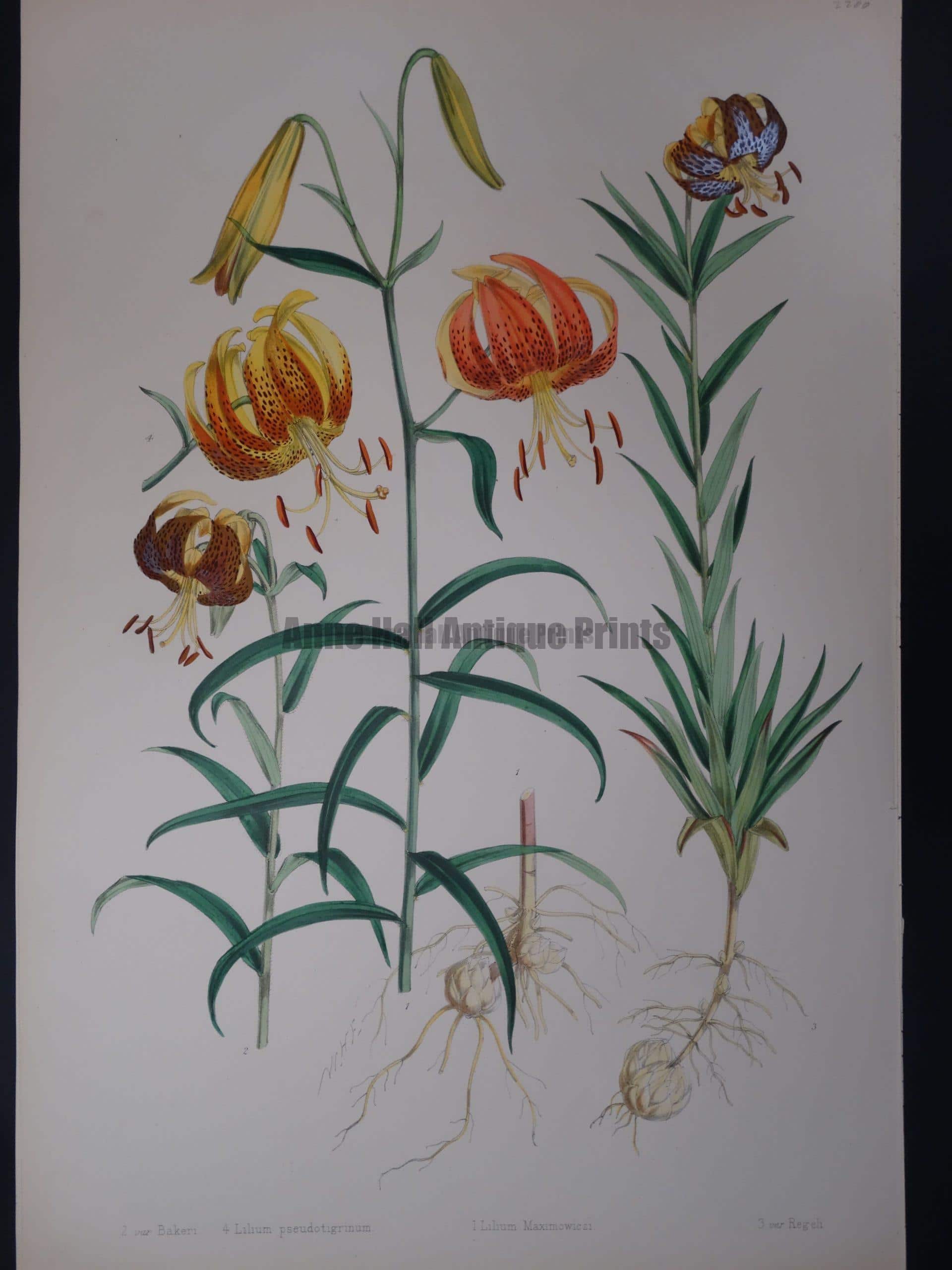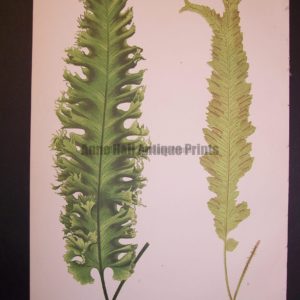Description
Elwes Lilies from his Monograph of the Genus Lilium
Elwes Genus Lilium Maximowiczi is sourced from H. J. Elwes Monograph of the Genus Lilium, published London 1877. Lovely hand water colored lithograph. Walter Hood Fitch (1817-1892) was born and educated in Glasgow, Scotland. Fitch moved to London to work with W. J. Hooker, the director of the Royal Botanic Gardens in Kew England. There Fitch became the sole artist for all official and unofficial botanical illustrations for the Royal Family.
This is a large folio lithograph from Elwes Lilies, in which Walter Hood Fitch was the botanical illustrator. The antique lithographs come from the most important book produced on lilies entitled A Monograph of the Genus Lilium, published c.1880. After the lithographer printed the image from a special limestone plate, the water coloring was meticulously added by an experienced water colorist.
Order Elwes Genus Lilium Maximowiczi
This antique lily lithograph is entitled Elwes Genus Lilium Maximowiczi and measures 15″ x 21.75″. Call 413-245-4197 to speak to Anne about the Walter Fitch & Elwes lilies. To see more antique lily prints, please visit our main page of all available pieces.
Notes on the lost art of lithography:
Lithography was a very laborious process. It took tremendous skill. It was a life long craft, once a lithographer, always a lithographer! No switching back and forth in careers in the OLD days. One would serve a long apprenticeship, sometimes years on end, with little to no pay, in order to become a craftsman like the one skilled to work on these rare Elwes Lilies that Walter Fitch produced.
Original illustrations were transferred onto a special kind of limestone. The limestone came out of a certain area of Germany. The limestone was cut into large slabs, about 1″ thick. The illustration was meticulously drawn onto the limestone slab with a type of a greasy crayon. What was under the greasy crayon essentially was what was printed in relief. The finished desired slab was then emerged into nitric acid. The nitric acid burned away what was not covered by the greasy crayon. That area was then in relief. The greasy crayon was wiped off, inked up, and printed onto a piece of heavy wove rag paper. (The making of the paper is another story).
Water coloring was meticulously added by a very experienced water colorist. Water coloring was also a life long career or craft. Intense ink from minerals and vegetables and insects made up water colors in the early days. These water colored lithographs are vibrant and beautiful. The prints themselves are in near perfect condition.





